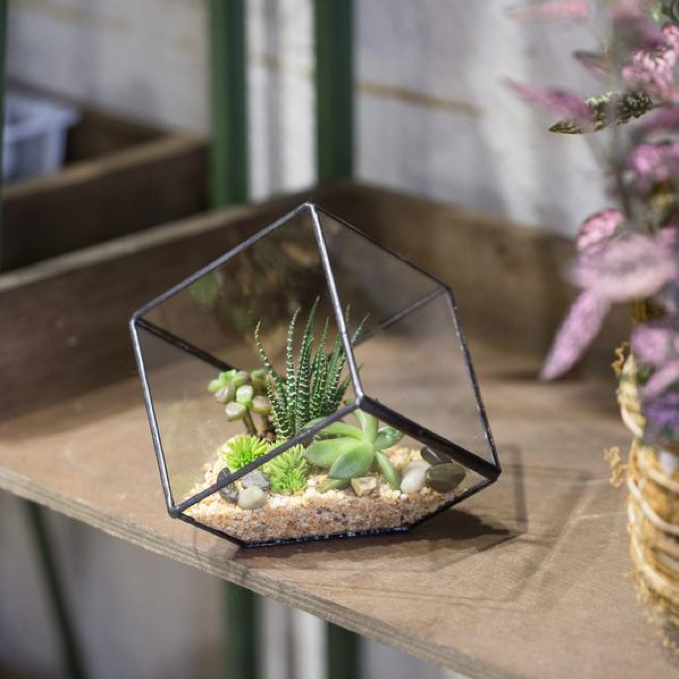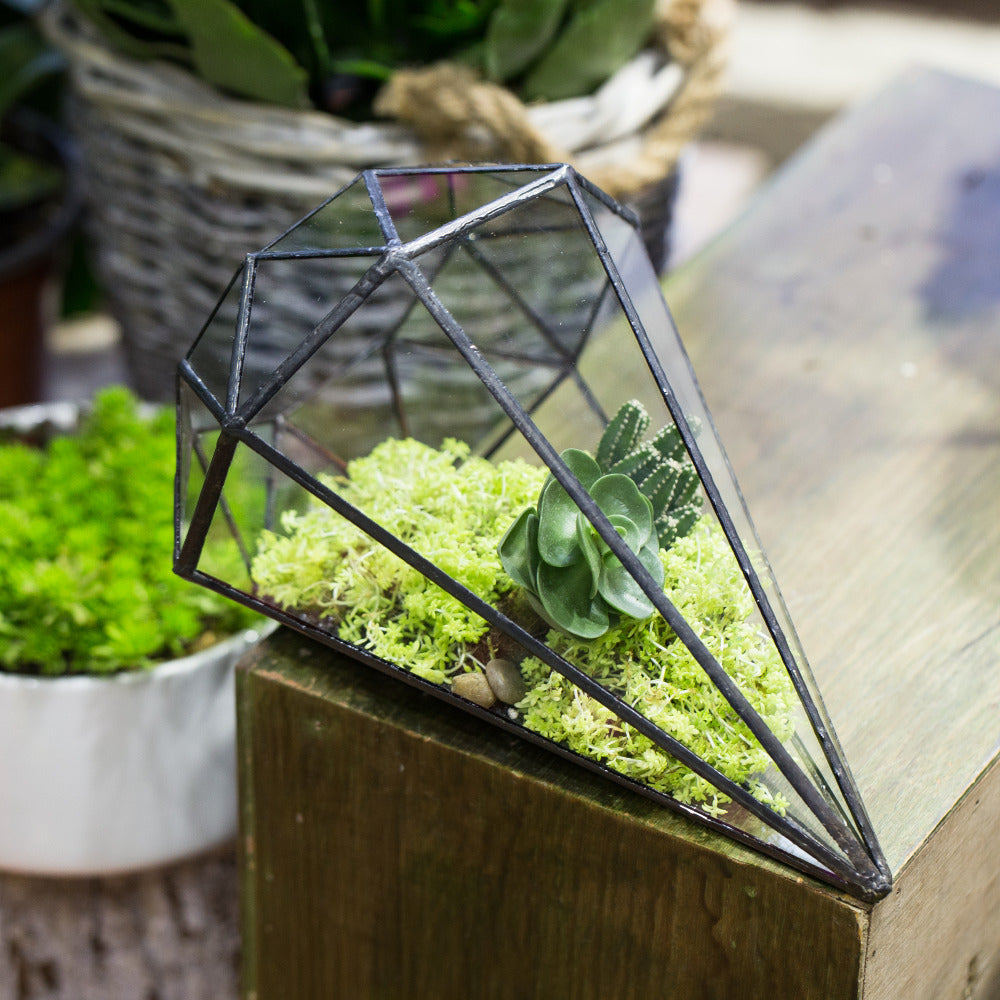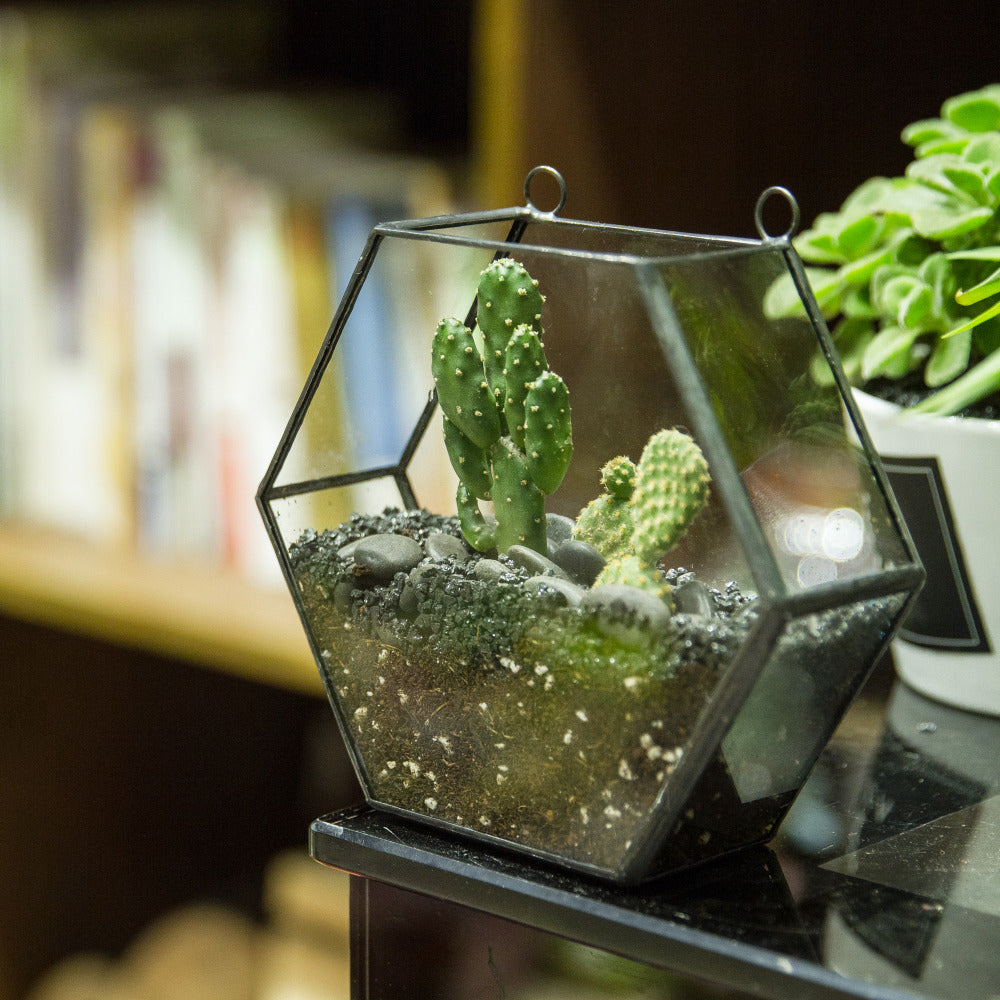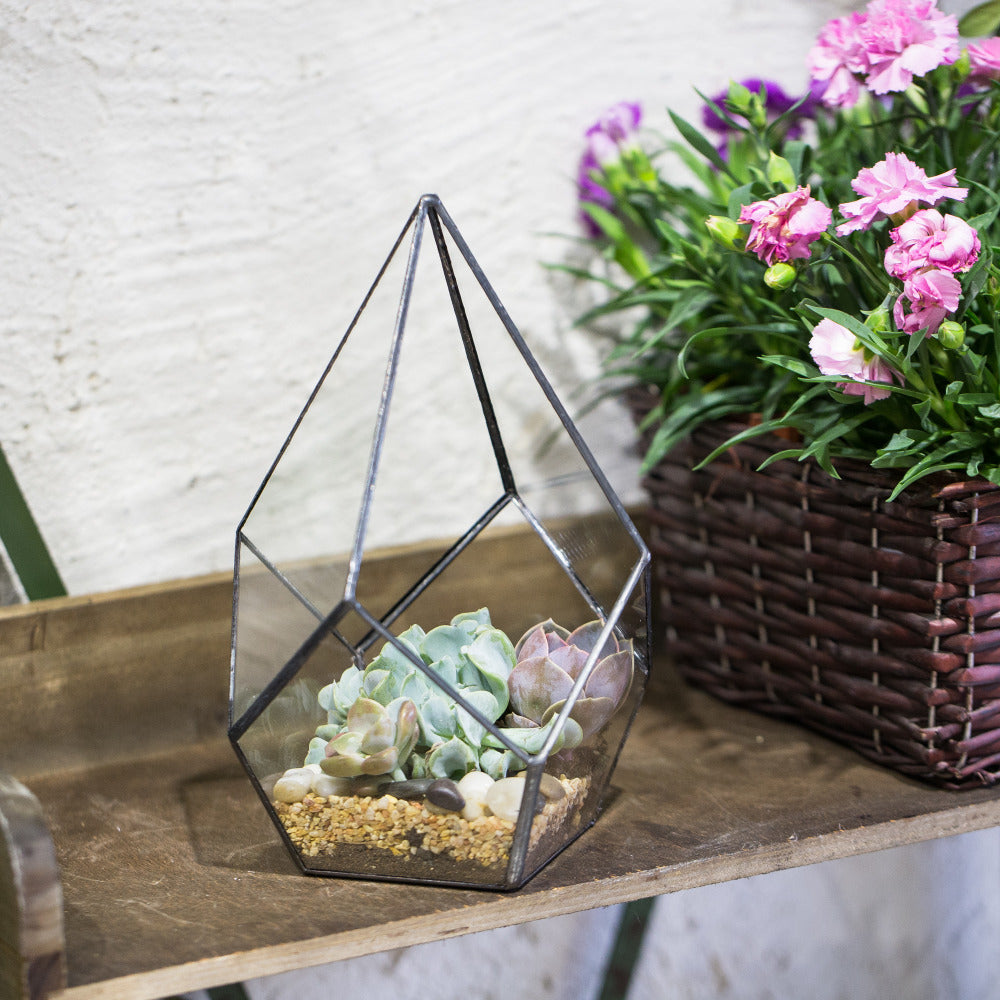Why Less Is More: Geometric Terrariums for a Minimalist Home
If you’re anything like us and love the look of clean white for your homes interior then you know that simplicity is key.
To achieve that modern, uncluttered look is in itself an art form and takes time to perfect.
Although the style itself isn’t new, minimalism has become one of the most defining styles of the current decade.

There’s no wonder minimalism has become the style of choice for homeowners around the globe – with spacious elements and simple palettes, it’s a breath of fresh air from a world filled with excess.
And of course, a home wouldn’t be complete without decorative houseplants. If you’re one of the many people who’ve decided to go for a minimalist design for their homes, adding a houseplant to your living space will add to the already calming effects of minimalism.
Usually, a bulky clay pot comes into mind when you think of the word ‘houseplant’. A plant that requires a lot of soil and water for it to thrive - it doesn’t exactly sound like a minimalist object, right?
Choosing the right plant to complement your décor is no easy feat. The hunt for that perfect plant can sometimes be road-blocked by overgrowing trees, tightly bunched house plants, or busily laid out greenery.
Fortunately, there are hundreds of ways you can introduce a simple houseplant to your minimalist lifestyle, sans your typical potted plant.
You have succulents, air plants… then you have the wonderful mini tabletop garden that is the terrarium!
Related: 9 Creative Ways To Stylize Your Tillandsias
Terrariums do not only serve as stunning décor for your room; they’re also a living, breathing ecosystem contained inside a little transparent planter.
Terrarium plants are also usually low maintenance, so they won’t consume too much water and require less care… very fitting for a minimalist lifestyle.
To see how to build your own sand terrarium click here
Geometric Terrariums are the application of the minimalist style on terrariums. Its straightforward design instantly adds elegance and sophistication to any space you add It to.
Its simplistic design also gives you extra freedom in designing your mini-garden inside the terrarium, as there will be no other restrictive elements of design that you need to take into consideration.
Typically, cacti and succulents are the advisable varieties of plants you can add in a geometric terrarium made of glass.
These plants are low maintenance, lightweight, and do not require much water and soil – two things that cannot be handled by these types of terrariums in large amounts.
Although it’s quite a limit to what you can put in a glass terrarium, there are hundreds of species of succulent plants that you can choose from to make your beautiful modern, minimal garden.
Likewise, there is a wide assortment of geometric terrariums that come in various shapes and sizes.
For instance, the terrarium pictured above has an octahedral design, a shape that can be described as an elongated diamond that will look simply stunning on a bookshelf. Acting as a hidden treasure, an item that does not demand attention but once you spot it, it will simply captivate your gaze. 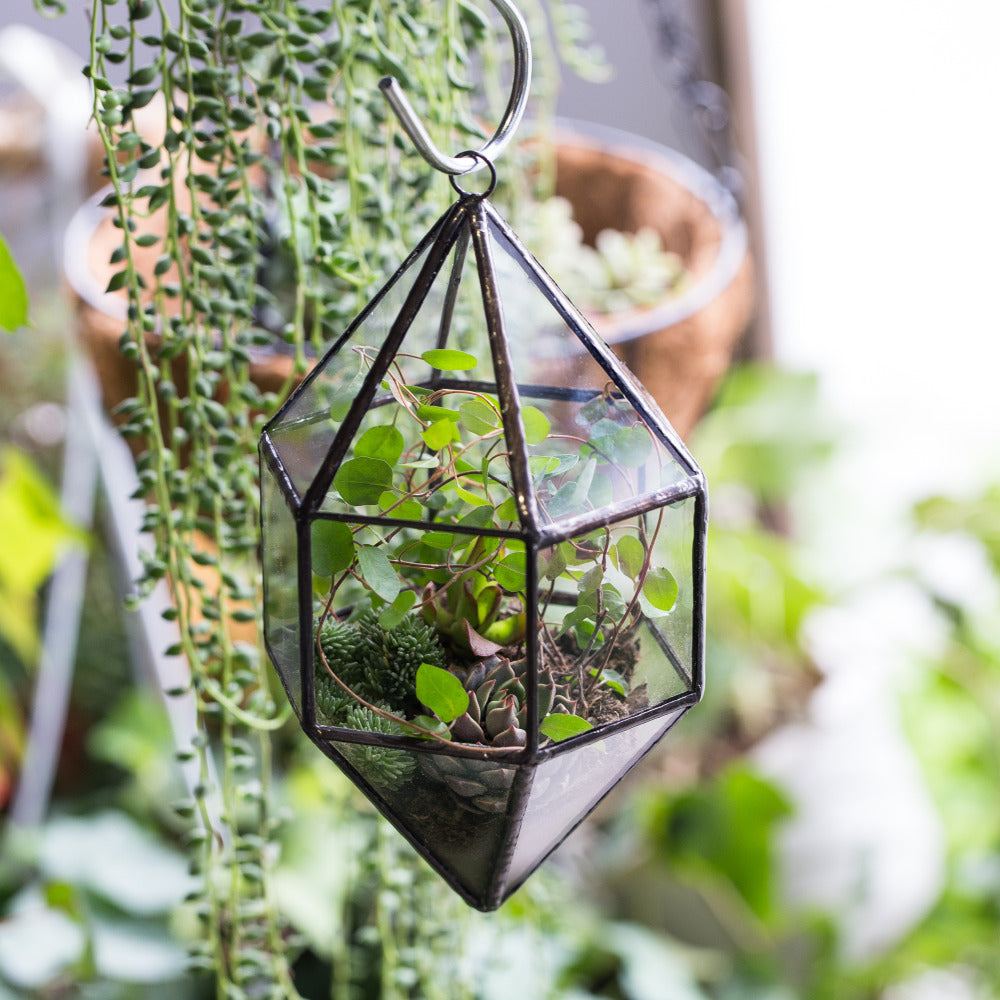
Geometric Terrariums also come in a variety that you can hang almost anywhere. This design also doubles as a space saver.
If you’re lacking surface to put your houseplants on, you won’t be missing out by opting for a hanging geometric terrarium.
For more information on vertical gardening check out our article here.
If you’re keen on playing around with soil, narrow geometric terrariums like this hexagon hanging terrarium gives more of a profile view of your little garden. This design allows you to get creative with layering different types and colors of soil.
Some geometric planters are much more spacious than others, such as this Carousel Geometric Terrarium. With the ample space it has inside, it can accommodate more plants, pebbles, or soil for you to play around with.
Larger geometric terrariums like this also make a great centerpiece for your coffee table or shelf.
Aside from plants, pebbles, and soil, you can also add different types of trinkets to decorate your geometric terrarium. For example, you can add little gemstones or miniature toys to give your geometric terrarium some character.
Ideally, these geometric planters should be placed in a monochrome and clutter-free environment. Otherwise, it would be harder to appreciate your planter if too many distractions are preventing it from being a true centerpiece, which is our aim here after all. To create the perfect miniature garden for our clutter free minimalist homes.
In conclusion, geometric terrariums make a modern and sophisticated addition to any living space, minimalist or not.
Their simple design makes it complementary to a wide range of styles and environments, so long as it isn’t a cluttered one. Its low maintenance quality also makes it a hassle-free houseplant, especially if you aren’t an expert in gardening.
Do you have your own tips, experiences, or questions in building your own geometric terrarium? Let us know in the comments below!

